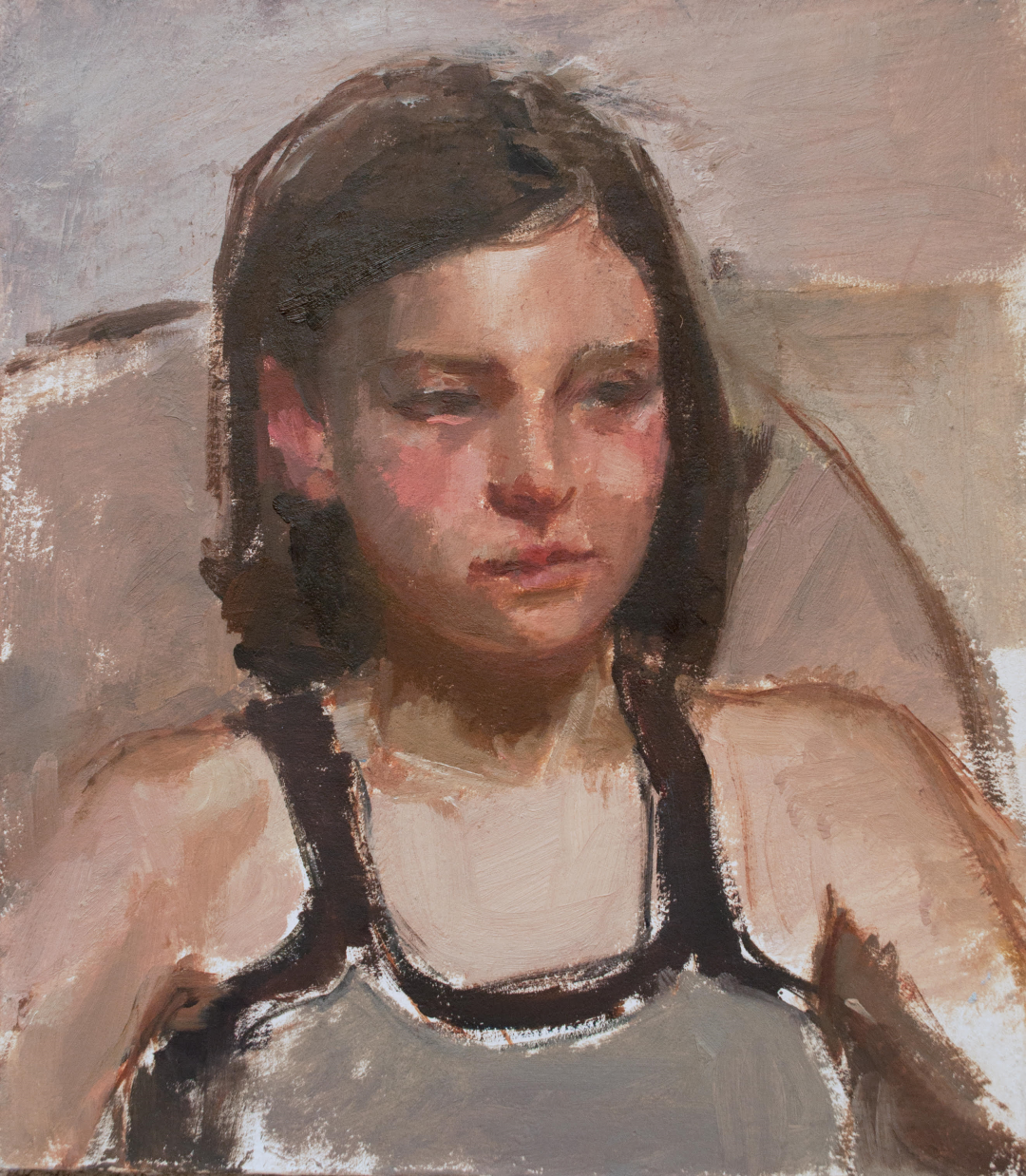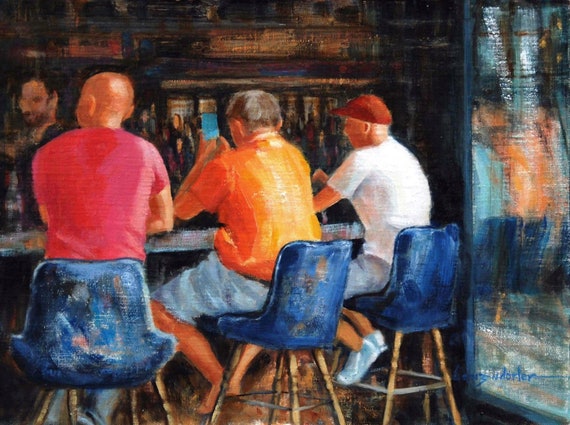The Influence of Figurative Oil Painting on Modern Art and Culture
The Influence of Figurative Oil Painting on Modern Art and Culture
Blog Article
A Trip With the Globe of Metaphorical Oil Painting: Finding the Special Characteristics and Emotional Depth of the Tool

History of Figurative Oil Painting
Arising during the late Middle Ages and growing throughout the Renaissance, figurative oil paint has an abundant background that mirrors both artistic advancement and social advancement. Oil paints were made use of in Europe as a means to boost the luminance and depth of color in artworks. Musicians such as Jan van Eyck spearheaded the tool, demonstrating its possible to record intricate information and appearances, hence permitting for a more realistic depiction of the human type.
As the Renaissance proceeded, distinguished numbers like Leonardo da Vinci and Michelangelo broadened the boundaries of figurative oil paint. They highlighted anatomical accuracy and point of view, developing works that shared feeling and narrative depth. The tool's versatility permitted trial and error with light and darkness, resulting in the growth of chiaroscuro techniques that further improved the aesthetic experience.
Special Qualities of the Medium
The evolution of figurative oil painting has been considerably influenced by the unique attributes of the tool itself. Oil paint, composed of pigments put on hold in oil, supplies musicians an amazing flexibility that enables a variety of textures and surfaces. Its slow drying out time makes it possible for meticulous mixing and layering, which can produce deepness and luminosity unattainable in various other tools.
Additionally, oil paint's rich pigmentation offers vibrant shades that maintain their strength gradually. This characteristic is important in figurative painting, where recording the subtleties of skin tones and emotional expressions is extremely important. The ability to attain soft transitions and subtle gradients enhances the realistic quality of topics, enabling artists to communicate complicated emotions.
In addition, oil paint sticks well to numerous surfaces, such as canvas, steel, and wood, broadening the extent of creative expression. The tool's flexibility supports different approaches, from in-depth realism to meaningful brushwork, enabling artists to explore their individual designs.
Eventually, the unique residential or commercial properties of oil paint not just enrich the visual experience yet likewise equip artists to connect profound stories, making figurative oil painting a deeply expressive art kind.
Methods and Designs Employed
Within the world of metaphorical oil paint, musicians utilize a diverse variety of methods and designs that contribute to the deepness and splendor of their job. One famous strategy is polishing, where clear layers of paint are used over dried out layers, allowing light to show and penetrate, boosting luminance and deepness. This technique is often used to accomplish a sense of realism and complexity in skin tones.
Another technique is impasto, where thick layers of paint are used with a palette knife or brush, producing a distinctive surface that includes a three-dimensional high quality to the painting. This style can evoke a visceral response, drawing the audience in with its responsive nature.
Musicians additionally discover numerous brushwork designs, from fine, detailed strokes that record complex attributes to broader, more meaningful strokes that communicate activity and emotion (figurative oil painting). The option of shade combination dramatically affects the total state of mind of an item, with cozy tones typically passing on sensations of convenience and amazing tones recommending sorrowful
In addition, the combination of chiaroscuro, the contrast between light and shadow, permits musicians to produce significant results that enhance the narrative quality of their job. Each strategy and design is thoroughly chosen to boost the visitor's experience and understanding.
Psychological Deepness in Metaphorical Art
Emotional deepness works as a keystone in metaphorical art, permitting musicians to transcend plain representation and involve visitors on a profound degree. This emotional vibration is typically accomplished with the nuanced portrayal of human figures, expressions, and communications. Artists harness the power of darkness, light, and shade to evoke feelings that reverberate deeply with the audience, producing a visceral link to the subject issue.
In figurative oil paint, the intricate layering of paint can mirror the complexities of human emotion. The option of palette, whether cozy or amazing, plays an essential duty in setting the state of mind and ambience of an item. Softer shades may stimulate serenity and self-questioning, while bold, contrasting colors can connect tension and drama.

Influential Artists and Their Works
Countless prominent artists have dramatically formed the landscape of metaphorical oil paint, each adding unique perspectives and techniques that continue to influence modern makers. Among these artists, Lucian Freud stands out for his extreme emotional depth and raw representation of the human type, usually obscuring the lines between elegance and decay. Freud's works, defined by thick, impasto brushstrokes, welcome viewers to confront the complexities of identity and vulnerability.

Likewise, Andrew Wyeth's thorough realism in items like "Christina's World" records extensive stories within seemingly easy make-ups. His usage of light and shadow stimulates a feeling of nostalgia and psychological resonance, drawing visitors right into the intimate globes he depicts.
In the world of modern art, Kehinde Wiley has obtained acknowledgment for his lively, epic pictures that challenge conventional notions of representation. By putting people of shade in contexts evocative timeless portraiture, Wiley's job redefines the canon of art background.
These musicians, together with others, have not just enriched metaphorical oil painting yet have actually likewise increased the discussion surrounding emotion, identity, and culture, ensuring that the tool continues to be a vital form of expression in the art world. figurative oil painting.
Verdict
In final thought, metaphorical oil paint continues to be an effective tool that encapsulates the intricacies of human emotion with its abundant coloring and functional strategies. The historical evolution of this art type, integrated with its unique attributes, enables profound imaginative expression. Strategies such as glazing and impasto improve the emotional resonance of each item, while the contributions of influential musicians proceed to shape the discussion and motivate surrounding this timeless style. The trip with figurative oil painting reveals its enduring value in the art globe.
The exploration of figurative oil paint offers a profound insight right into the interaction of strategy, feeling, and historic context that defines this age-old tool. Oil paint, made up of pigments put on hold in oil, supplies artists an exceptional Read Full Article flexibility that permits for a wide variety of appearances and coatings.Within the world of figurative oil painting, musicians employ a diverse selection of methods and styles that contribute to the deepness and richness of their work.Many significant musicians have actually substantially formed the landscape of figurative get redirected here oil painting, each contributing one-of-a-kind perspectives and strategies that proceed to inspire modern makers.In final thought, figurative oil painting stays a powerful tool that envelops the intricacies of human emotion through its rich coloring and flexible methods.
Report this page